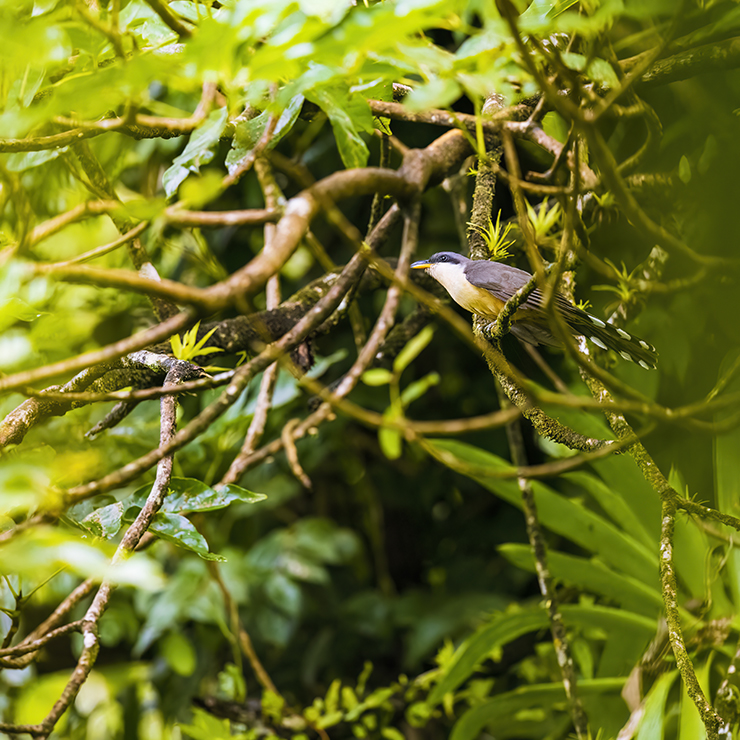
Sitting pretty as the sole member of the genus Catharopeza, the Whistling Warbler is an oddity in many respects. Endemic to a tiny island in the Lesser Antilles chain of the Caribbean – St. Vincent – this medium-sized warbler is currently listed as Endangered according to the IUCN. For a bird threatened as this one is, I had little expectations when visiting St. Vincent a couple weeks ago. Our time was greatly limited, so we had to be lucky.
Sure enough I had been dreaming of a desirable frame of this enigmatic bird. At least a view would already bowl me over – its bold white eye-ring and chest-stripes against that slaty grayish-blue plumage meant an exposure nightmare for the photographer within me. As we neared the location of the bird’s habitat, a new player entered the game: the environment. See, the Whistling Warbler loves humid, montane forest; this obviously meant very little light to work with. The elevation also invited considerable cloud cover, which diminished the light even further.

Agricultural land at the foothills of our destination
But photographing a bird so infrequently encountered would be a bonus. The walk into the foothills of the volcanic forest began uneventfully, over benign terrain. As we entered the forest, however, the gradient began to increase significantly, and some members of the group opted out.

An interesting sight along our journey was a Mangrove Cuckoo, not in namesake habitat!
After some scrambling and relatively steep ascents, we arrived to a clearing within which we waited for around an hour. Occasionally the trip leaders tried audio playback, but the reply was only silence. On more occasions than I’m ready to admit we got fooled by a Bananaquit or two. Eventually the hourglass passed its final grains of sand; and the most dejected of the group departed first, determined to not capitulate to gravity’s constant demands on the treacherous descent.
About halfway back to where we began, fortunes shifted. From the vegetation overhead, the distinctive crescendo of finely whistled notes cascaded on our weary but still expectant ears like fresh, cool water on parched lips. Frenzied whispers and emphatic pointing followed, wide eyes and open mouths became a common sight at this point. Above us was in fact, a pair of Whistling Warblers – restless as expected, hopping and shimmying along thin, twisted twigs with cocked tails and inquisitive faces. These were different from the birds I had expected though. Not a sight of any white eye-ring or breast-stripe. These birds were wholly brown and otherwise nondescript save for pink legs and that cocked tail.
Initially I was disappointed, I must admit. My selfish goal was to render this bird in the perfect pose, in pristine plumage, making the most of the little light (ideal conditions for me), and showcase an endangered species in all its finest regalia. However, what flitted before us was not this bird – but something arguably much more significant. These were juveniles. Proof that the Whistling Warbler was increasing its population in the face of habitat loss and volcano eruptions. Furthermore, juvenile Whistling Warblers have supposedly never been photographed before.

Whistling Warbler
So, there you have it. Nature always gives you what you need, irrespective of what you want. A notable and groundbreaking photograph, although it may not win any photography awards. Reason to return, definitely.











Awesome, Farraaz. Congrats on both the encounter and the positive outlook for this species!
Thanks, Mike!